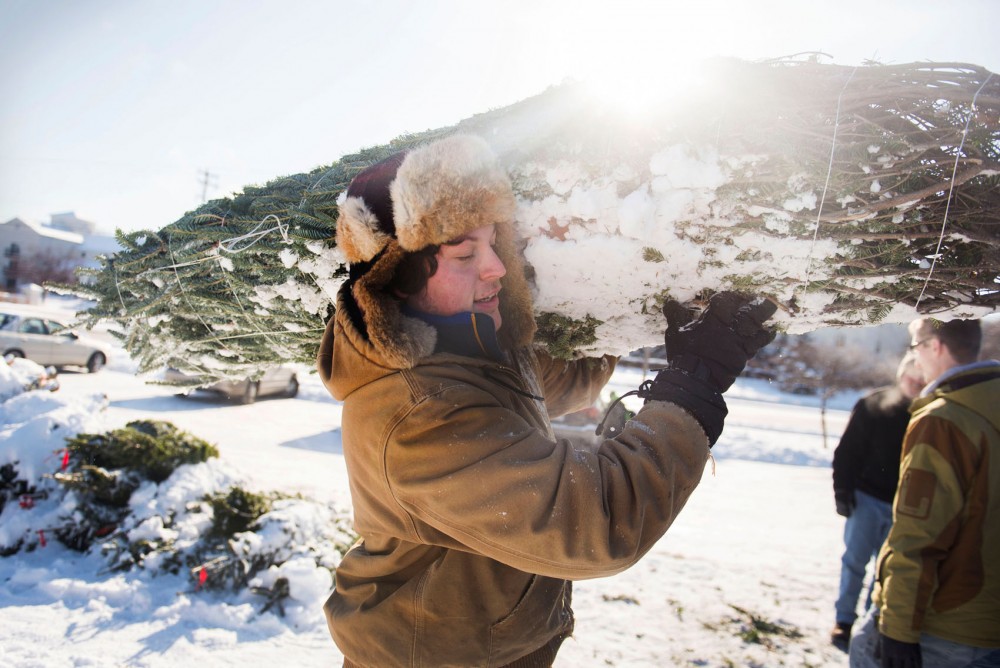Mark and Sue Galatowitsch went to a small golf course parking lot Saturday to pick out their Christmas tree.
The couple has made it a 20-year tradition to buy their tree at the University of Minnesota’s Forestry Club annual sale, this year joining hundreds of other Minnesotans doing the same.
Because the Forestry Club receives little University funding, the tree sale is a necessity.
Club President Lauren Stufft said it makes between $10,000 and $15,000 in profits from the sale.
“We don’t really get much money from the school like other clubs the U will fund,” she said. “But any funding we do get is very, very minimal.”
Proceeds from the sale cover costs for the club throughout the year.
Trees sell for $27-90 depending on species and height, said senior club member Frank Falzone.
The sale runs from the day after Thanksgiving until trees run out — usually the week before Christmas.
The club ordered about 1,200 trees for this season’s sale, Stufft said. It could take longer than usual for trees to sell out because of this year’s late Thanksgiving, she said.
Customer and University library professional Karen Olson said she and her husband come because the students are knowledgeable.
“We just figure they know what they’re doing,” she said. “They know the trees; they know where they came from.”
From cutting down the trees to selling them, the work sits almost entirely on the shoulders of the club’s 15 members.
To get some of the trees, club members go to Carl Vogt’s tree farm in St. Francis, Minn. Vogt, a former forest resources professor, lets the students come to his farm and cut down the trees they need in the three weeks before Thanksgiving.
“It’s a lot of hard work and it can be in kind of extreme weather,” Falzone said. “But I really enjoy it.”
Senior member Dave Rudolph said he works at the tree sale for more than 20 hours each week. But for him, it’s a relaxing way to gain professional experience.
“It’s more of an outlet for stress because I get to kind of forget about everything and just work here,” he said. “[I] get to lift stuff and saw through trees and not have to think about anything.”
Funds from the tree sale go toward scholarships within the club, a yearly banquet and the annual lumberjack competition the club participates in, Treasurer Emmie Peters said.
She said the club is hosting this year’s Midwestern Forester’s Conclave, a competition in which thirteen schools compete in “timbersports” like chopping and sawing, as well as technical games like wood identification.
Because hosting the event provides the Forestry Club with another financial burden, Stufft said, it will seek sponsors to help alleviate costs.
Even organizing the sale itself is costly, she said, because the club pays its members to work in addition to covering other expenses incurred in hosting the sale.
A local competitor in the Christmas tree market, Linder’s Garden Center, closed this year. Forestry club adviser Anthony D’Amato said that could benefit the club’s sale.
D’Amato said the company from which Linder’s bought its Christmas trees still sells them in the shop’s old parking lot, but he thinks the Forestry Club will have a leg up because the business itself is closed.
Regardless of its competitors, he said, Forestry Club members are “can-do” people and always sell every tree.
“I’m biased, but it’s pretty impressive with what these students do,” he said. “It’s an amazing undertaking led solely by University undergrads.”


